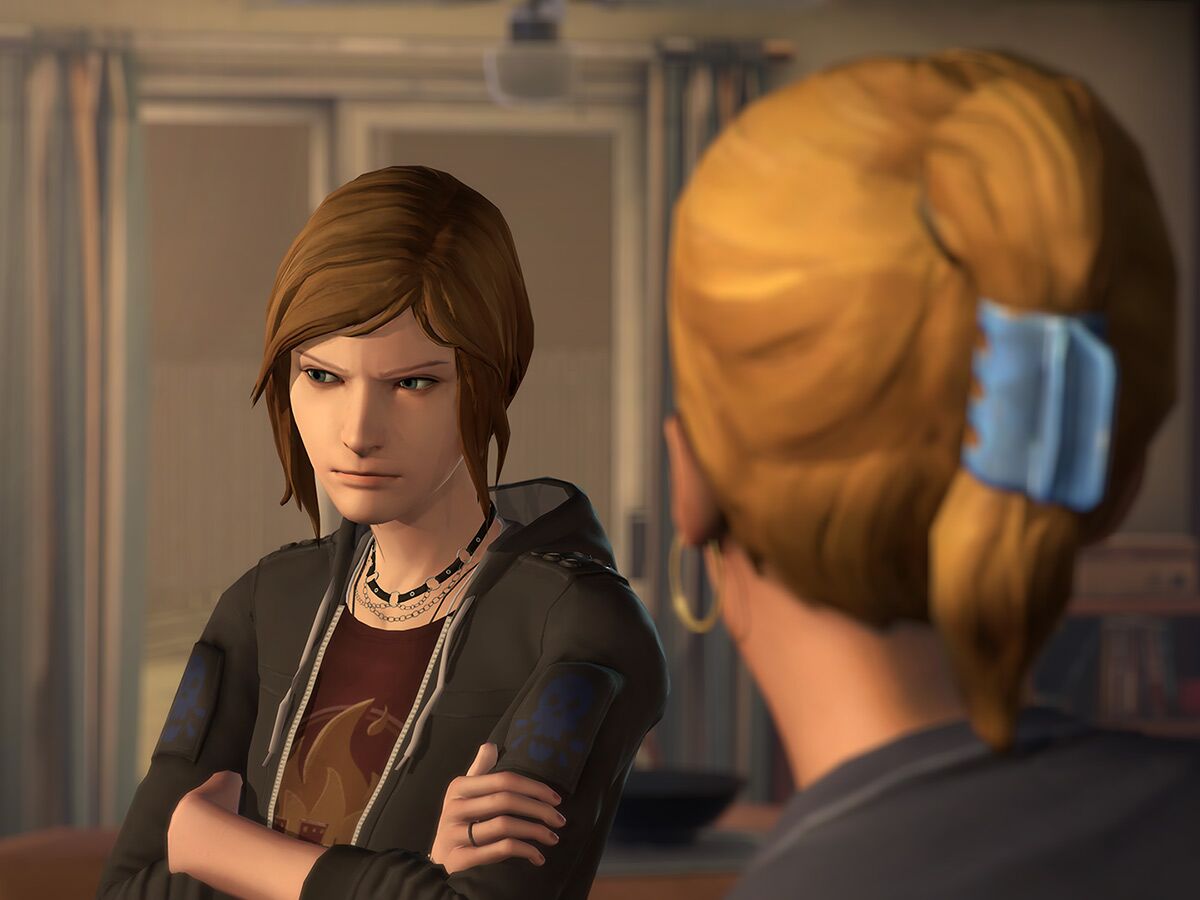Life Is Strange Prequel Tackles LGBT Romance “Carefully”
Life Is Strange: Before the Storm is bold – and tactful – about the flexible nature of relationships between teenagers.
SEATTLE – Adventure game fans flocked to Life Is Strange when it debuted in 2015 for its unpredictable story, clever time travel mechanics – and its daring romance options. While Life Is Strange isn’t the first or only game to explore LGBT teenage romance, its inclusion felt natural rather than exploitative or heavy-handed.
Life Is Strange: Before the Storm, a standalone prequel to the game, tackles many of the same themes, and is equally bold – and tactful – about the flexible nature of relationships between teenagers.

Life Is Strange: Before the Storm is currently available on PC, Xbox One and PS4 for $17. The first episode is out now; the other two will come over the next few months.
I met with Zak Garriss, the game’s lead writer, and Chris Floyd, its co-director, at PAX West 2017 to discuss the challenges and rewards of creating a follow-up to one of the breakout adventure game hits of the last few years.
The game acts as a prequel to the original Life Is Strange, winding back the clock three years to tell a story about Chloe, a friend of Max, the first game’s protagonist. Chloe must deal with her father’s death, her mother’s new boyfriend, and the pain of Max moving away.
MORE: Most Anticipated Games
Among other things, the two developer are incredibly proud of creating a game in which relationships develop organically over time, rather than as the result of a few irrevocable “key” moments.
Sign up to get the BEST of Tom's Guide direct to your inbox.
Get instant access to breaking news, the hottest reviews, great deals and helpful tips.
“We put a premium on asking you to make some difficult choices about how you want to relate to characters,” Floyd said. “No single choice defines your relationship with a given character.”
In particular, the team stressed that the game’s primary relationship would be between Chloe and a girl named Rachel Amber – a supporting cast member from the first game, whose life may not be as perfect as she lets on.
“There are many times throughout the entire story when [Chloe] has a chance to define what they are together,” Garriss explained. “It’s not strictly romantic or platonic, and you don’t decide that in a single moment … We’ve written a story that accommodates that complexity, and attempts to embrace a more normal paradigm of how you are with someone else over however long you’re together.”
There are few enough potential LGBT romances in mainstream gaming, and ones that involve teenagers are even harder to come by. Garriss is aware of both the stigma and the opportunity associated with including it in Before the Storm. When I asked how he handled it in the game, he replied, “Carefully.”
“We’re exploring analogues to the teen experience of growing up,” he said. “To being imprisoned by your own body, by your own identity, by your own sexuality. We’re using it as a chance to look at different aspects of life in our society, and ask questions about how hard it is … I think all of that makes for a very delicate alchemy … to turn a lens on social issues, questions about your own identities and how we relate, and how we’re friends, or we’re romantic, or we’re family, or whatever it might be.”
Another challenge facing the team is that Deck Nine, the studio behind Before the Storm, did not develop the original Life Is Strange. (That was Paris-based Dontnod.)
“For a game that’s as beloved as the first Life Is Strange, with a really passionate community, it’s a ton of pressure,” Floyd said. “It really is. But it’s also a great privilege.”
Life Is Strange is deceptively popular for a small adventure game comprising five episodes. The game’s Twitter account has more followers than Mass Effect’s, and the fans are very exacting when it comes to new additions to the ongoing story. The biggest challenge for Before the Storm, gameplay-wise, will be that it does not feature the first game’s time manipulation powers, opting instead for a more straightforward adventure game structure.
“[The time-traveling power] was really an embodiment of Max as a character from the first game, and what her situation was,” Floyd said. “We took this big leap … we think Life Is Strange can stand on its own with just powerful choices and consequences, with meaningful relationships between characters we can really relate to.”
Marshall Honorof is a senior editor for Tom's Guide, overseeing the site's coverage of gaming hardware and software. He comes from a science writing background, having studied paleomammalogy, biological anthropology, and the history of science and technology. After hours, you can find him practicing taekwondo or doing deep dives on classic sci-fi.


